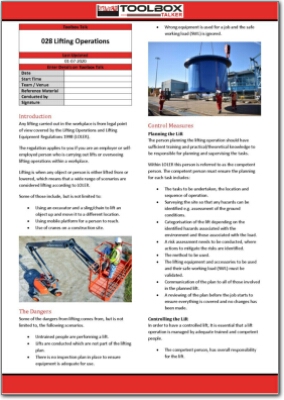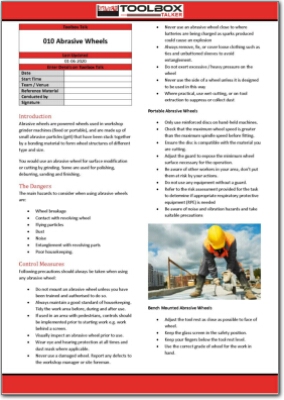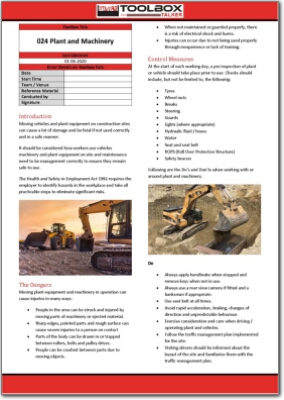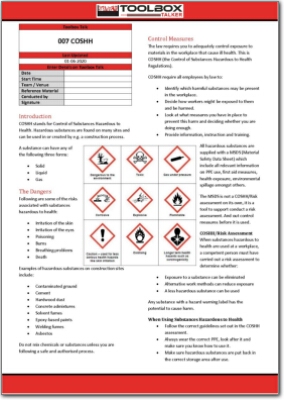Description
Leptospirosis a form of bacterial infection, also known as Weil’s Disease. It is most commonly carried by animals such as rats.
Presence of rats on construction sites can to some extent not be avoided and therefor poses a hazard of the bacterial infection leptospirosis. Even after the rats are removed the risk still exist, as the organism is carried in rats’ urine.
The bacteria can enter through areas of the skin where it has been damaged e.g. scratches or cuts. This is common if getting in contact with water contaminated from rat urine, which is often the case in ditches.
Employers are legally obligated by The Health and Safety at Work etc Act 1974 to provide employees with a safe and healthy working environment.
Our leptospirosis toolbox talk helps keep employees safe and reduce health and safety issues in workplaces near still standing or slow flowing water or where vermin are present.
Items Covered in the Leptospirosis Toolbox Talk
Our leptospirosis toolbox talk is split up in following sections:
- Introduction: Provide an introduction to what leptospirosis is and how it is contracted.
- People at Risk: Define the high risk groups for contracting leptospirosis.
- The Symptoms: Outline a range of common symptoms that a person has contracted leptospirosis.
- Control Measures: Define the controls that can be used to avoid or reduce the risk of contracting leptospirosis.
- The Law: List the regulation related to maintaining a safe and healthy working environment.
- Toolbox Talk Questions: Include a few questions to validate attendees understanding of the leptospirosis toolbox talk.
Each of our toolbox talks include an additional page where relevant hazards on site can be identified and discussed, together with an attendance list where participants can be recorded and sign.
Purchase our Leptospirosis Toolbox Talk to keep your employees safe, or take advantage of our toolbox talk packages which contains a range of our toolbox talks at a reduced price.





